The World's Most Stunningly Pink Animals
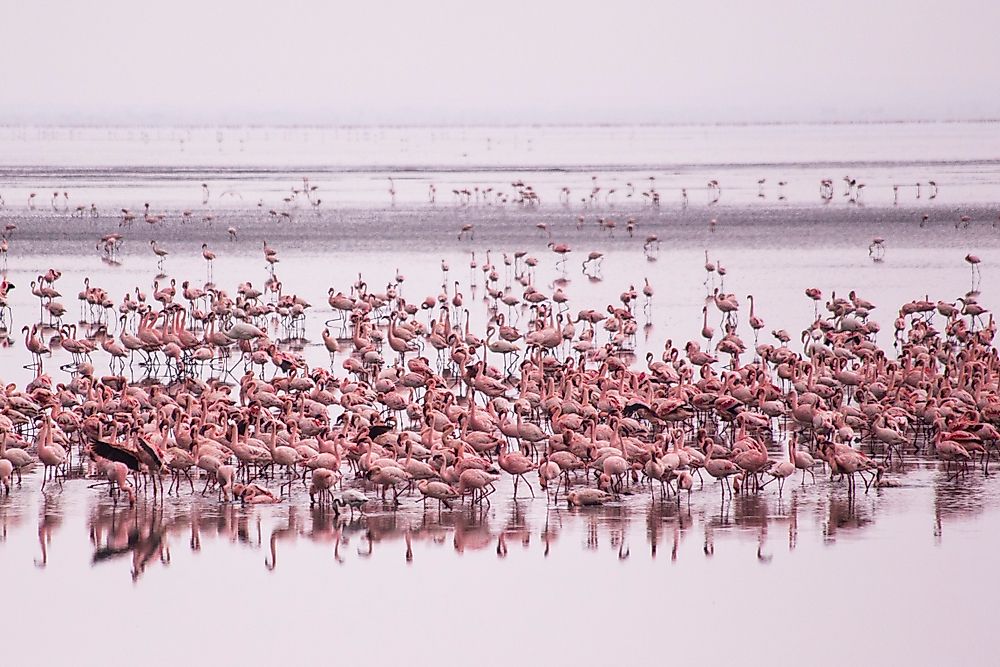
How often do you see a pink animal? Pink, usually associated with love, compassion, and softness is not an actual wavelength (not a real color). It is just a color that our brains see or make by combining both red and violet wavelengths into one according to some scientists. However, for a non-existent color, several animals seem to possess it.
15. Axolotl
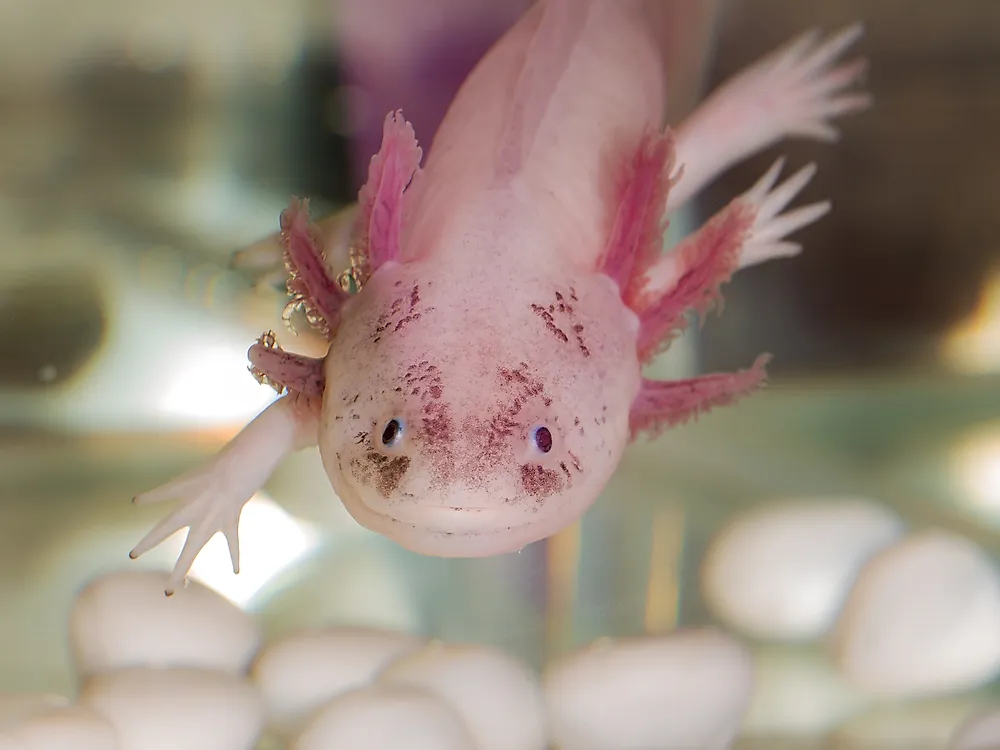
The axolotl or the Mexican walking fish is first on the list. Scientifically known as Ambystoma mexicanum, the axolotl is an amphibian that does not go through metamorphosis. It has a lifespan of about ten to fifteen years and lives as larvae its whole life, a condition known as neoteny. Mainly found in Lake Xochimilco, the axolotl is a quite exotic pet that is already facing extinction. It also has regenerative abilities enabling it to regenerate its spine, jaw, limbs, and its brain!
14. Small Elephant Hawkmoth
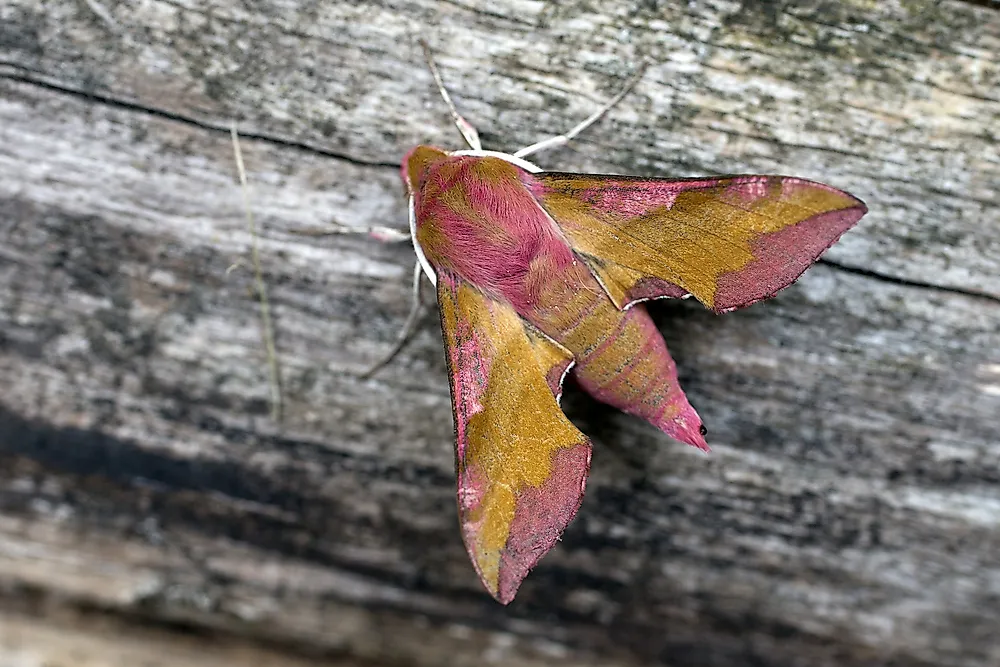
The small elephant hawk moth whose binomial name is Deilephila porcellus is found in Western Asia, North Africa, and Europe. It lives as a gray caterpillar first then changes to become a moth with pink and olive wings. It is attracted to light and adults can usually be seen from May to July and mostly flies in the dusk. This animal is however not to be mistaken for its cousin the Elephant hawk moth, which is larger and less colored.
13. Bargibant's Pygmy Seahorse
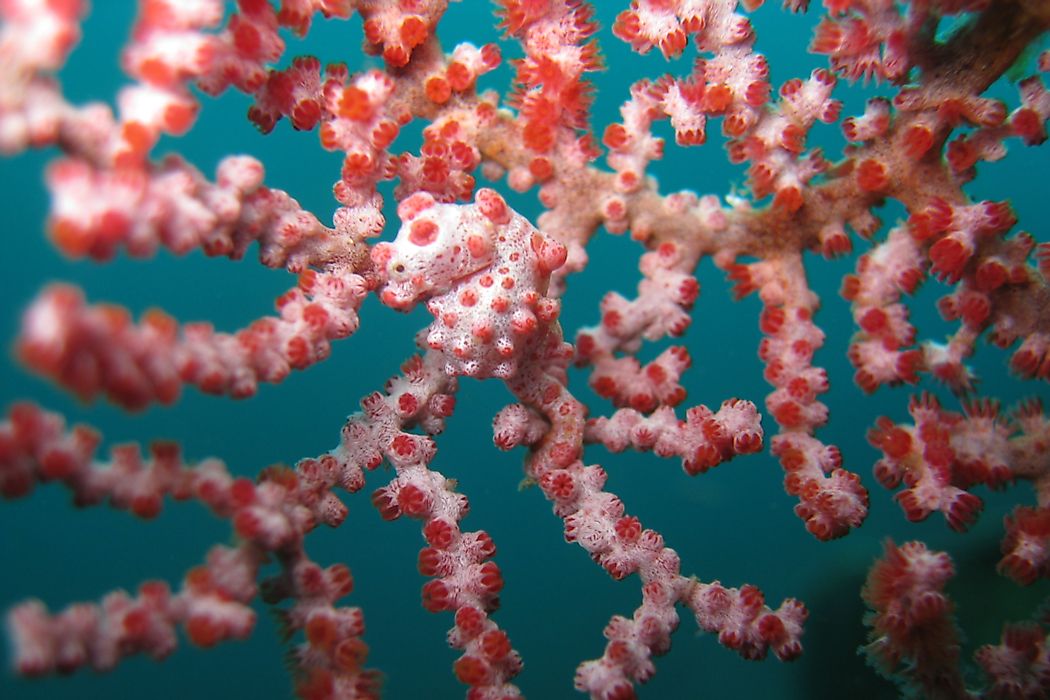
The Bargibant’s Pygmy Seahorse otherwise known as the Bargibant’s seahorse or the pygmy seahorse can be found in the Indo-Pacific area. Scientifically known as Hippocampus bargibant, the seahorse is tiny with a size of 0.79 inches (less than two centimeters). It lives on fan corals and hides itself using its camouflage abilities. It was discovered in 1969 when Georges Bargibant stumbled upon them while he was studying a coral. They feed slowly and more often since they lack a digestion system.
12. Katydid
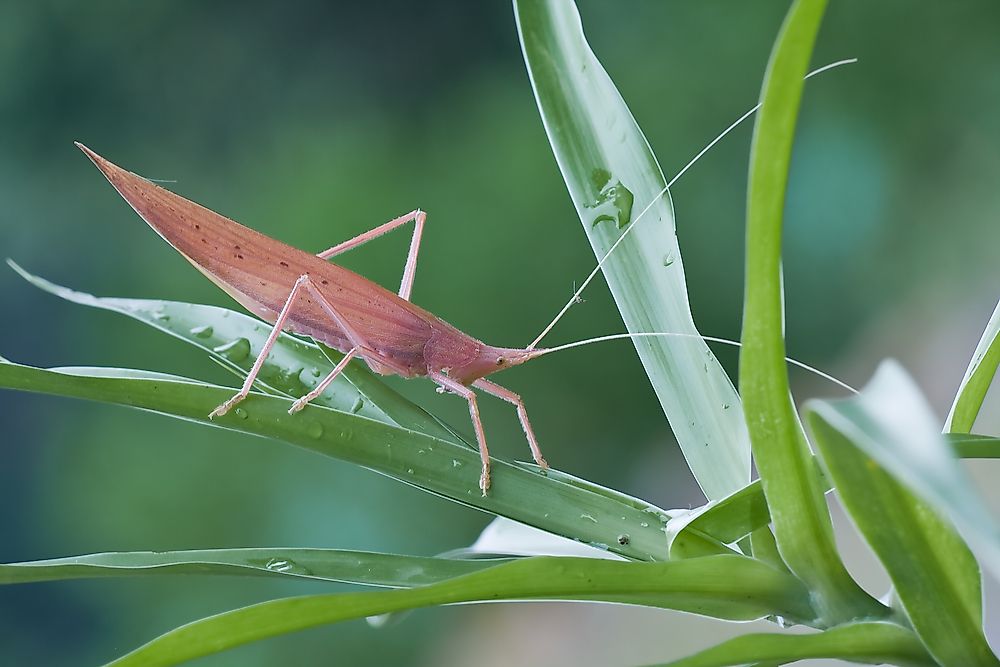
Alternatively known as bush crickets in the UK or long-horned grasshoppers (a term that is not used frequently), the katydids can mimic, have camouflage abilities, and are primarily nocturnal. Their scientific name is Tettigoniidae. The katydids, however, have a green color and not pink. The pink color seen in some katydids is said to be a recessive gene called erythrism. They have a lifespan of approximately one year and develop into full adults very late. They can be found everywhere in the world (every continent) except in Antarctica.
11. Namib Sand Gecko
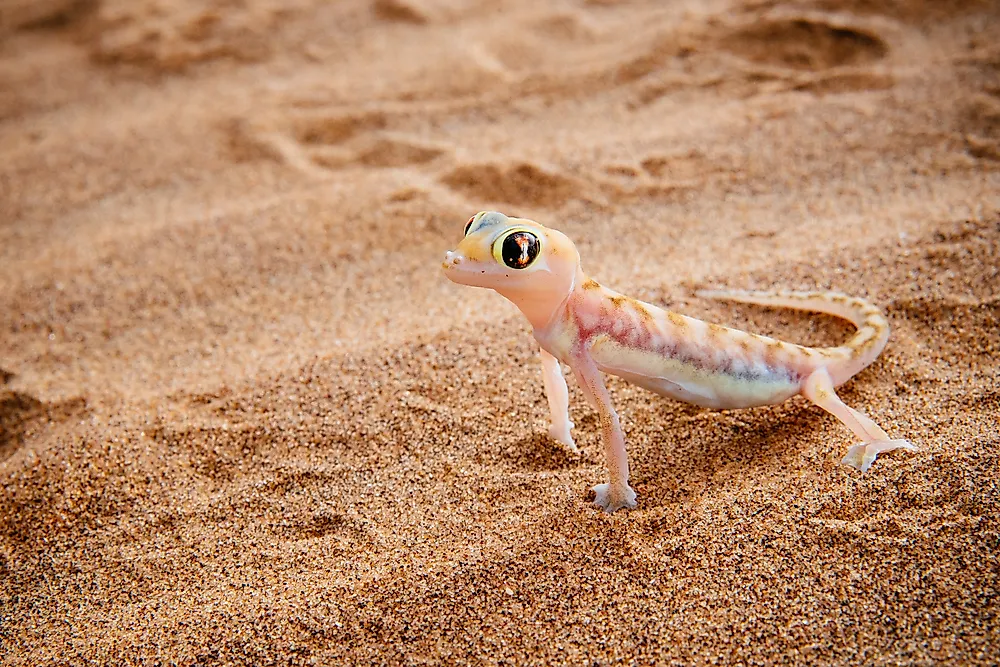
The Namib Sand Gecko alternatively known as the web-footed gecko is scientifically known as Pachydactylus rangei. It can be found in Namibia and Angola. In 1908, it was described for the first time by L.G Andersson (a zoologist) who named it after Dr. Paul Range who discovered it. It has translucent skin which makes its internal parts visible and also helps it maintain its camouflage in the Namib Desert. It is fast, nocturnal, lives in burrows and it mostly eats crickets, small spiders, and beetles among others.
10. Pine Grosbeak
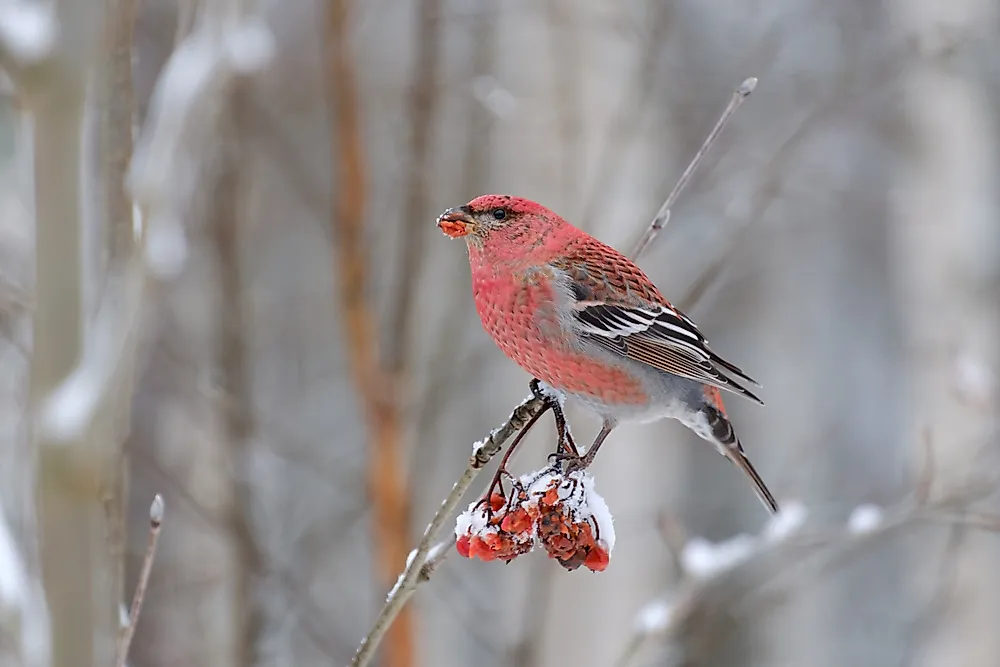
Found in North America, subarctic Fennoscandia, and Siberia, the pine grosbeak's binomial name is Pinicola enucleator. It is a fruit eater mostly during winter and travels long distances for food during food scarcity. The male grosbeaks have rose-pink or rose-red feathers while the females maintain a yellow-olive color. This color however sometimes depends on the location. During the mating season, the males whistle and protect their territories to attract mates.
9. Hairy Squat Lobster
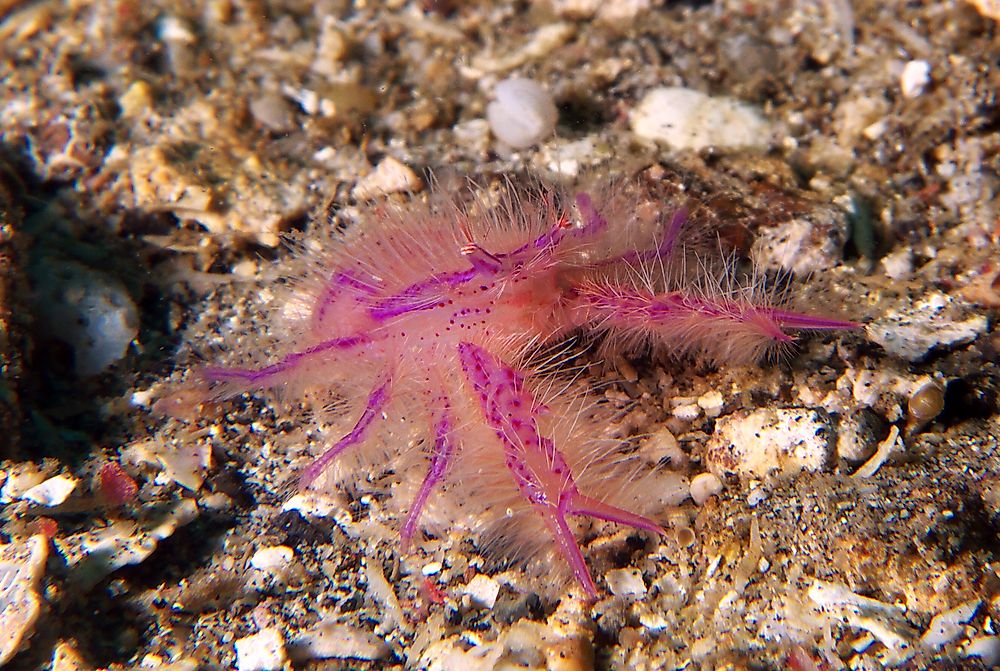
The hairy squat lobster is otherwise known as the “fairy crab" and is known for its small size and incredibly unusual appearance. It measures 0.28 inches regarding length and can be found living in specific sponge species. Its scientific name is Lauriea siagiani and can be found in Japan, Indonesia, and the Philippines. Despite having no economic value, the animal is incredibly beautiful with a translucent body, pinkish-purple legs, and a body covered in purple spots and white hairs.
8. Crab Spider
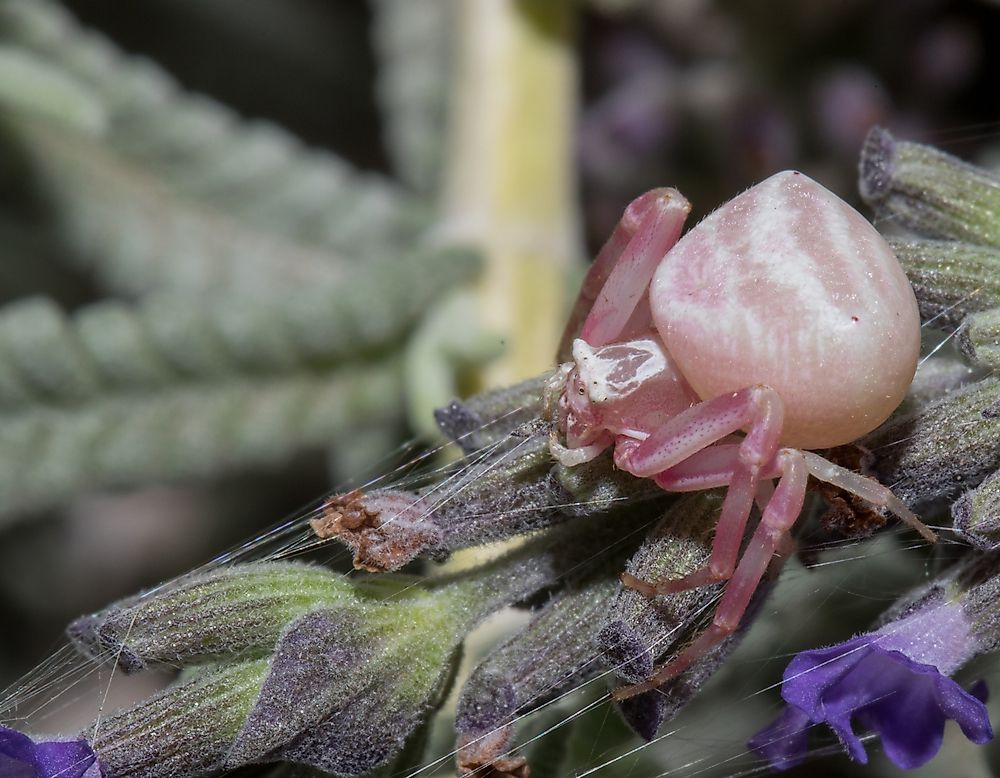
The scariest feature about the crab spider is perhaps its ability to camouflage itself. It does not create webs to capture its prey, but there are some called the wandering hunters with some known as the ambush predators. Some can sit on a flower, and after some days it will match the flowers’ color. Some hide on barks and leaves as they wait upon their prey. Their scientific name is Thomisidae and can be found in Northwest Europe, North America, and Northern and eastern Australia.
7. Roseate Skimmer
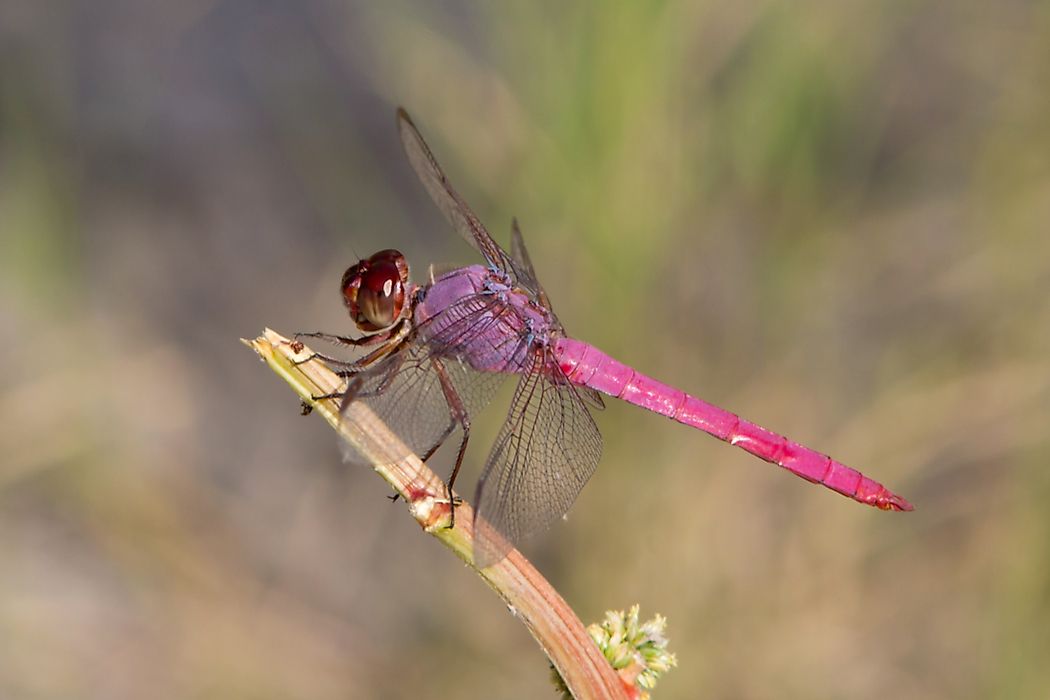
Who said that predators could not be beautiful? Meet the Roseate Skimmer, a dragonfly that looks like a jewel but a very deadly predator. Known scientifically as Orthemis ferruginea, the dragonfly is native to North and South America where it inhabits pools, slow streams, ditches and temporary or permanent ponds because it loves open water. The males’ abdomens are rose pink and red while the females maintain an orange-brown color. They feast on insects and mostly fly during the day.
6. Orchid Mantis
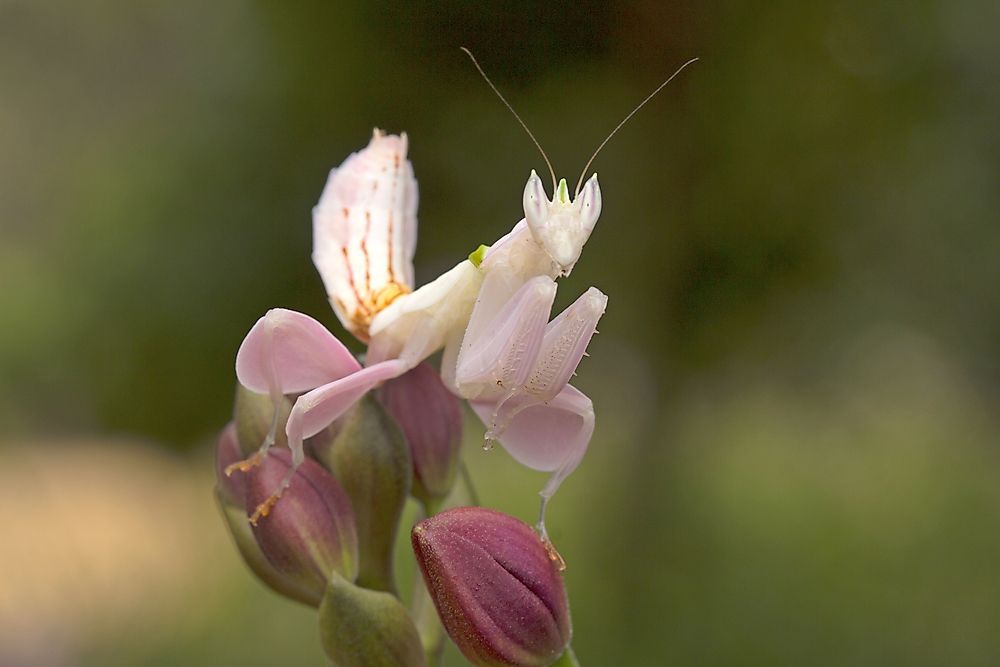
It is scientifically known as Hymenopus coronatus, and it is efficient when it comes to mimicry. Alternatively, the mantis can be called the walking flower or pink orchid mantis. Found in Southeast Asia, it can be mistaken for a flower because it can camouflage itself and mimic orchids. It uses its four legs to simulate the petals while the front pair with teeth captures the prey. It prefers insects as food. A writer once confused the insect for an orchid which he termed carnivorous after the insect attacked a butterfly.
5. Flamingo
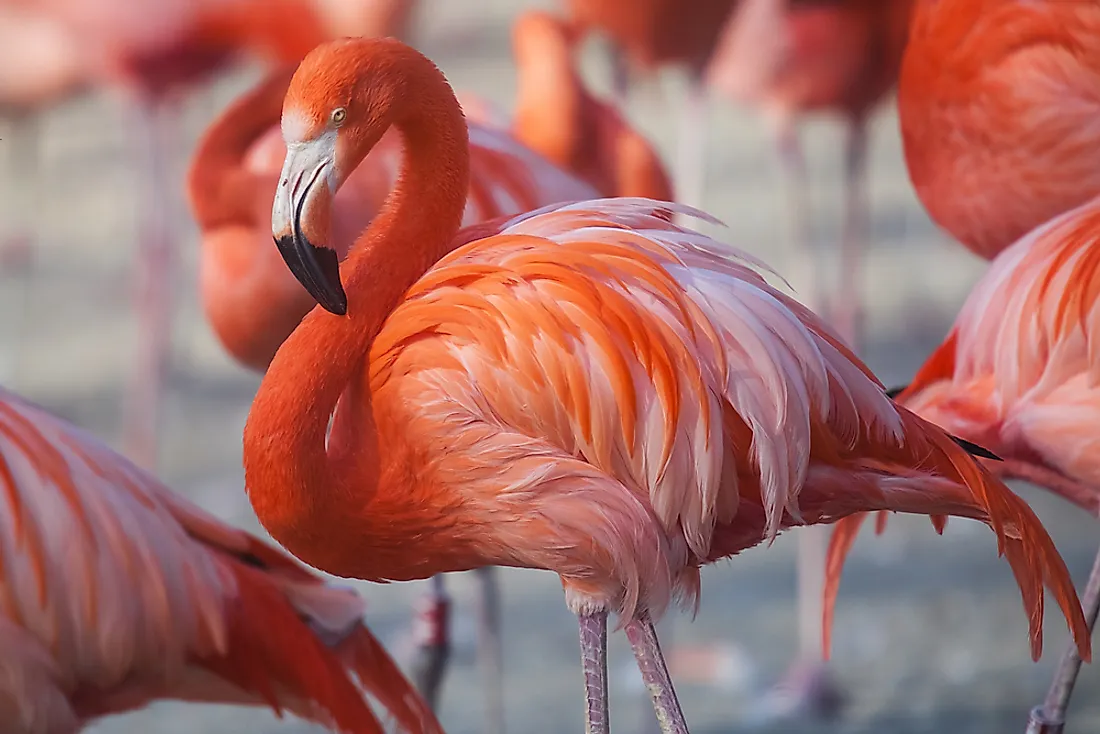
The flamingo has to be the most known animal in this list. Its color lies between light cotton candy and a bright scarlet. Its binomial name is Phoenicopteridae and can fly, and it is known to stand on one leg. The reason for this is not known. At birth, flamingoes have a gray color but gain the pink color as they grow because of their diet which is full of invertebrates and beta-carotene algae, and they (flamingoes) will turn white if they lack it. There are four known species of flamingos in the New World and two in Afro Eurasia.
4. Roseate Spoonbill
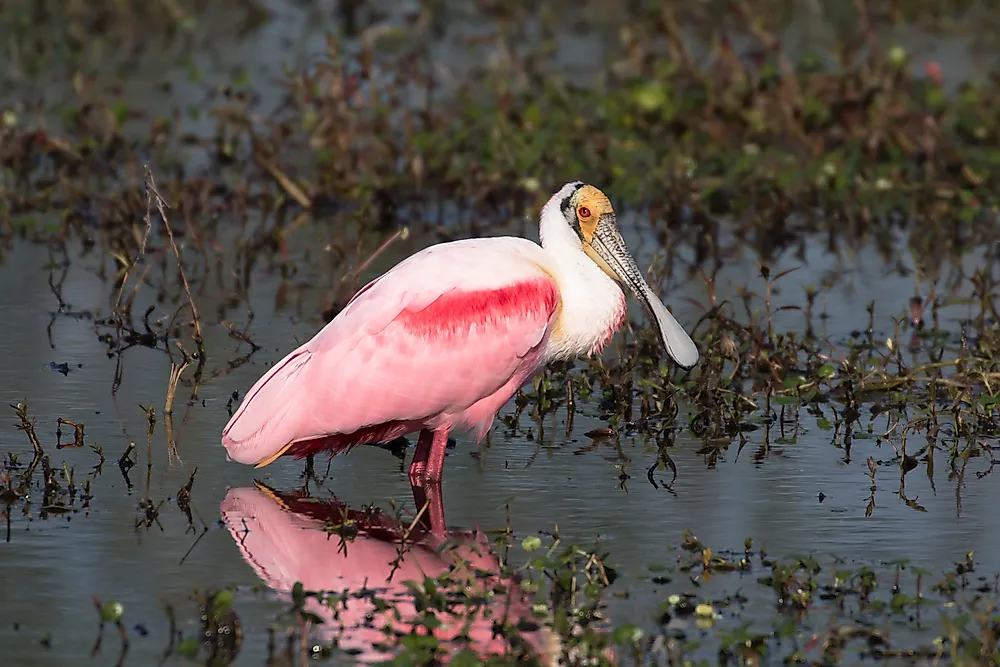
Found in South America, Central America, Mexico, and the Caribbean, its binomial name is Platalea ajaja. The adult spoonbills have a light green head, white neck, and pink feathers. Similar to the flamingos, they acquire the pink color from carotene and mostly live in lagoons, mangrove keys, coastal marshes and others. Its diet is mainly small fish, marine invertebrates and some plants in which it eats while moving its head from side to side. It has a bill in the shape of a spoon which is the most outstanding feature it has.
3. Dragon Millipede
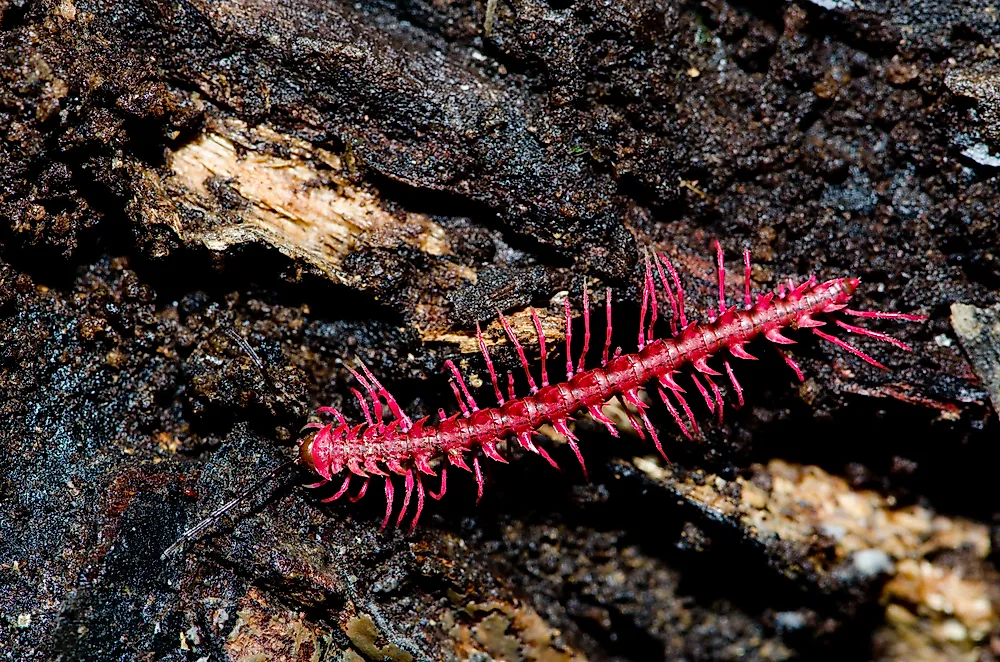
It is scientifically known as Desmoxytes purpurosea and can alternatively be called the shocking pink dragon millipede. An adult dragon millipede is about 1.2 inches or three centimeters. It lives on leaves in the open and to protects itself from predators; it secretes hydrogen cyanide giving it a color that shouts aposematism. It was recently discovered in Mekong River, Southeast Asia. The “dragon” however cannot breathe fire. The name was due to its physical appearance which resembles a dragon.
2. Galápagos Pink Land Iguana
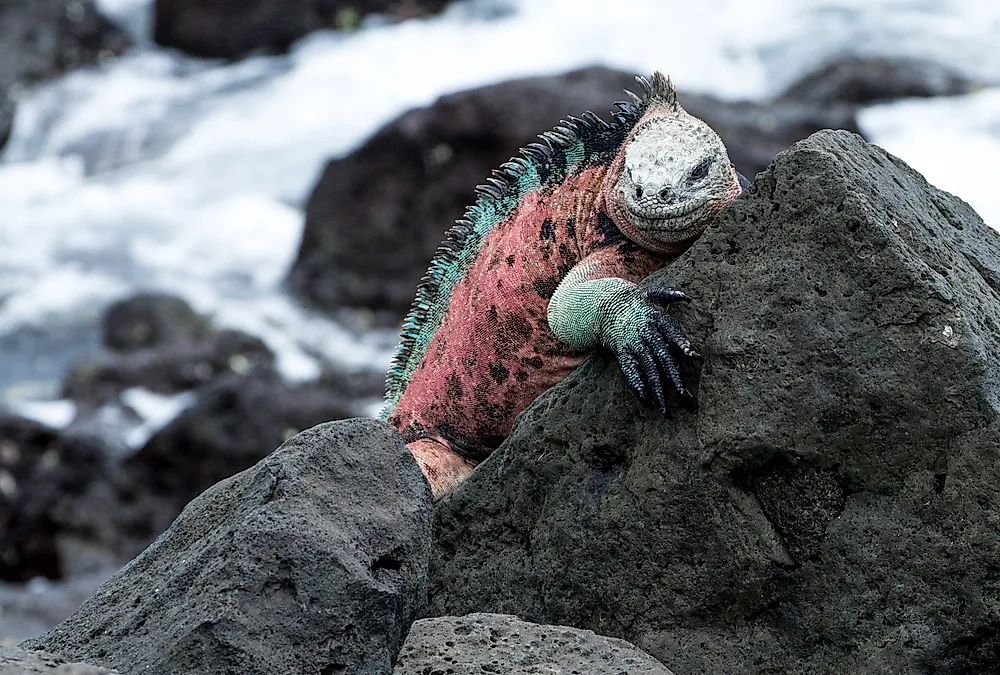
Scientifically known as Conolophus marthae, it belongs to the lizard family, and it was found in 1986. It is chiefly herbivorous despite its predator look and has a short head and claws on its feet plus solid legs. In 2009, they were identified as a separate species from other land iguanas. Their defining feature is their pink body which has dark stripes running across it. They lack a specific skin pigment which gives them the pink color and allows us to see its blood. They have been declared an endangered species (critical level) with less than 200 remaining.
1. Nudibranch
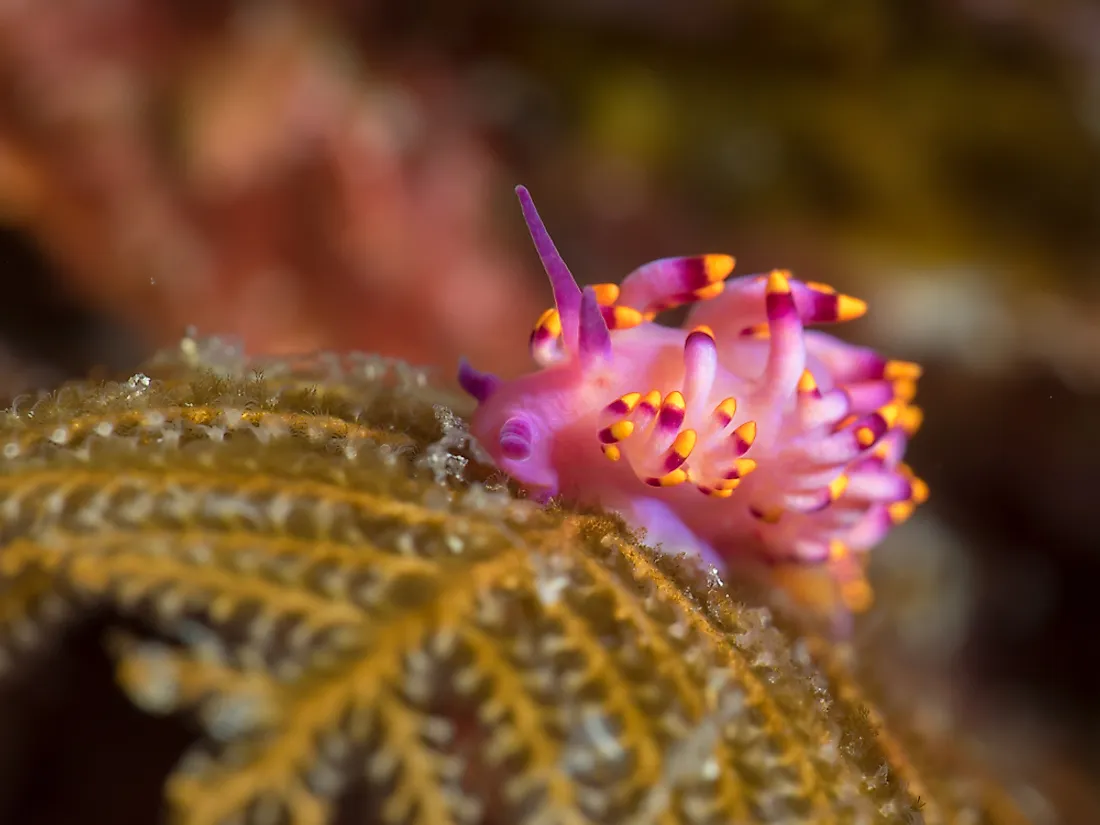
These marine animals are known to shed their shells when they metamorphose. Due to their fantastic appearance, they have been given several names like the “clown,” “marigold,” “dancer,” “splendid” and “dragon.” They can be found in seas across the world but are not able to survive in saline waters save for some few species. They habit reefs which are warm and shallow and like to eat sponges, hydroids, fish eggs among others. They are carnivorous, exhibit aposematism and some people eat them.











